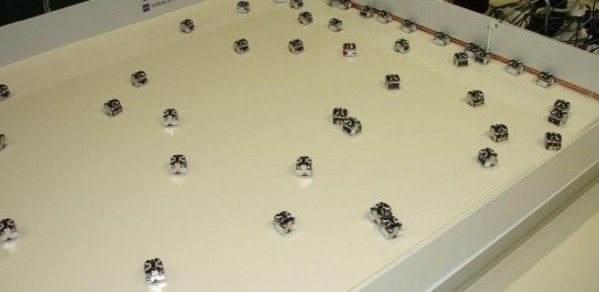
Dr Chih-Chun Chen and Dr Nathan Crilly of the Engineering Design Centre investigate the premise that design and engineering principles can be applied to biological entities and ask what synthetic biology could learn from and contribute to other groups tackling complex design problems.
Many of the pressing problems of synthetic biology such as evolving standards, knowledge sharing and ethics, are problems that would greatly benefit from the wisdom of other domains and disciplines.
Synthetic biology is a field born from the premise that design and engineering principles can be applied to biological entities. Principles such as encapsulation, modularity and compositional hierarchy pervade much of the field’s literature and are seen as its core tenets.Yet when you ask practising synthetic biologists what they do and how they do it, a more complicated picture emerges.
The context-dependent nature of biological entities can lead to the emergence of unexpected systemic properties, which means design (manipulating the system) and science (understanding the system) often go hand in hand. Sometimes this also means taking a black-box approach and applying computational techniques which explore the solution space without a complete model of how the system works. Furthermore, the synthetic biology community is now recognising the need to not only standardise the characterisation of biological parts but to also standardise the characterisation of the practices leading to the characterisation of these parts; e.g., the different conditions in which parts exhibit particular behaviours. Indeed, more experienced practitioners in the field now see standards themselves as “evolving” entities that need to be adapted to the environments in which they are applied.
Very often, a synthetic biology project or design problem requires a multi-disciplinary team to employ a diverse set of methods, techniques and tools. These range from those drawn from the rational design tradition (e.g., pathway design), to those adapted from physics or complexity science (e.g., mathematical modelling), to freshly developed machine learning techniques (e.g., reinforcement learning). This “kludging” approach reflects the resourceful and adaptive spirit with which the field has come to tackle its complex design problems. These are design problems that involve entities that are inherently difficult to predict (both at the element level and at the system level) and design objectives that are poorly articulated or in flux. Furthermore, many synthetic biology endeavours have far-reaching social, economic and ethical implications, thus transforming the social environment in which the field operates as well as responding to it.
Yet synthetic biology is not the only field seeking to address ill-defined “wicked” problems, nor the only field that seeks to apply design principles to complex entities. Swarm roboticists also operate within the realm of complex design, attempting to program cohorts of robots to collectively accomplish a task. Elsewhere, other groups are tackling complex design problems, even if they would not necessarily think of their work in those terms. For example, policy makers seeking to “engineer” society through incentives and penalties for individuals’ behaviour also deal with unpredictable systems and feedback loops that only become apparent after a policy intervention. Other designers of socio-techno systems are also engaged in complex design because the social components of the systems that they are concerned with are inherently stochastic in their behaviour and might be poorly characterised from the outset.
What sets established complex design fields such as synthetic biology and swarm robotics apart, however, is that unlike in more traditional design or engineering settings, context dependency, emergence and unpredictability are the norm. Practitioners in these two fields expect the unexpected and for this reason, complexity drives their design practice. So, fields such as synthetic biology and swarm robotics might be viewed more generally as fields that are expert in complex design, fields that might learn from each other and also fields that other complex design practices might learn from.
To explore this, we conducted an interview study with specialists from these two complex design fields. The study allowed us to identify three essential aspects of complex design problems and practices that apply across different problem domains, application contexts and disciplines:
- The characterisation of complexity, e.g. context dependency, emergence, non-linearity;
- The design objective with respect to this complexity, e.g. avoid, exploit, compensate for; and
- The design approach adopted, e.g. rational, black box.
Capturing design practice in this domain-neutral way permits designers from different design disciplines and application contexts (and also within the same disciplines and application contexts) to both share their practices and understand where they differ. Indeed, adopting such a domain-neutral perspective would permit cross-domain collaborative problem-solving, with synthetic biologists, swarm roboticists, policy makers and technologists all contributing to each other’s endeavours.
What does this mean for the future of synthetic biology? The possibilities are endless. Many of the pressing problems of synthetic biology such as evolving standards, knowledge sharing and ethics, are problems that would greatly benefit from the wisdom of other domains and disciplines. At the same time, the expertise and experience synthetic biologists have in complex design would be of immense value to many non-biological application domains. Ultimately, it will be the synthetic biology community itself to decide how to share and exploit the different practices of complex design, but to do so, it must first understand what these practices are.
The preceding article was written by Dr Chih-Chun Chen and Dr Nathan Crilly and published under a Creative Commons 4.0 license at the PLOS SynBio Community Blog. It relates to their recent open access paper, “Describing complex design practices with a cross-domain framework: learning from Synthetic biology and Swarm Robotics.” Research in Engineering Design (2016): 1-15. doi: 10.1007/s00163-016-0219-2

